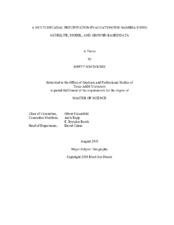| dc.description.abstract | Precipitation in southern Africa exhibits high variability with rain often falling in an intense deluge or not at all. Considerable research has gone into understanding what drives precipitation in southern Africa and how it can be better predicted. Where past research has usually evaluated southern Africa in general or South Africa in particular, this study looks at precipitation in Namibia, a country with a unique climate regime. The first objective of this thesis seeks to identify a long-term precipitation product that accurately represents precipitation over Namibia. The second objective is to utilize the long-term product to create precipitation climatologies and determine trends at different scales. The final objective identifies relationships between precipitation in Namibia and global teleconnections, and how those global teleconnections drive precipitation in Namibia. Three long-term precipitation products, Climate Prediction Center Unified Gauge-based Analysis of Global Daily Precipitation, Climatic Research Unit Timeseries Version 4.01, and European Centre for Medium-Range Weather Forecasts ReanalysisInterim (ERA), are compared against Tropical Rainfall Measuring Mission 3G68Land, a satellite-based product considered here to represent observed precipitation. Using five metrics and three different analyses, ERA is identified as the best long-term precipitation product.
ERA is used to create climatologies that highlight the beginning (October), peak (January), and end (April) of the Namibian rainy season, as well as quantify mean annual precipitation. Trends show increasing annual precipitation in Namibia, as well as positive monthly precipitation trends in December, January, and March. The drivers of precipitation in Namibia via global teleconnections are identified using both the original ERA precipitation, and the first two principal components of Namibian precipitation. Monthly, seasonal, and annual time scales at thirteen lag times are compared. January and February precipitation positively correlates to the Southern Oscillation Index, while February precipitation negatively correlates to the Pacific Decadal Oscillation. The results suggest that global teleconnections in the Pacific have the greatest influence on Namibia’s precipitation regime. | en |


